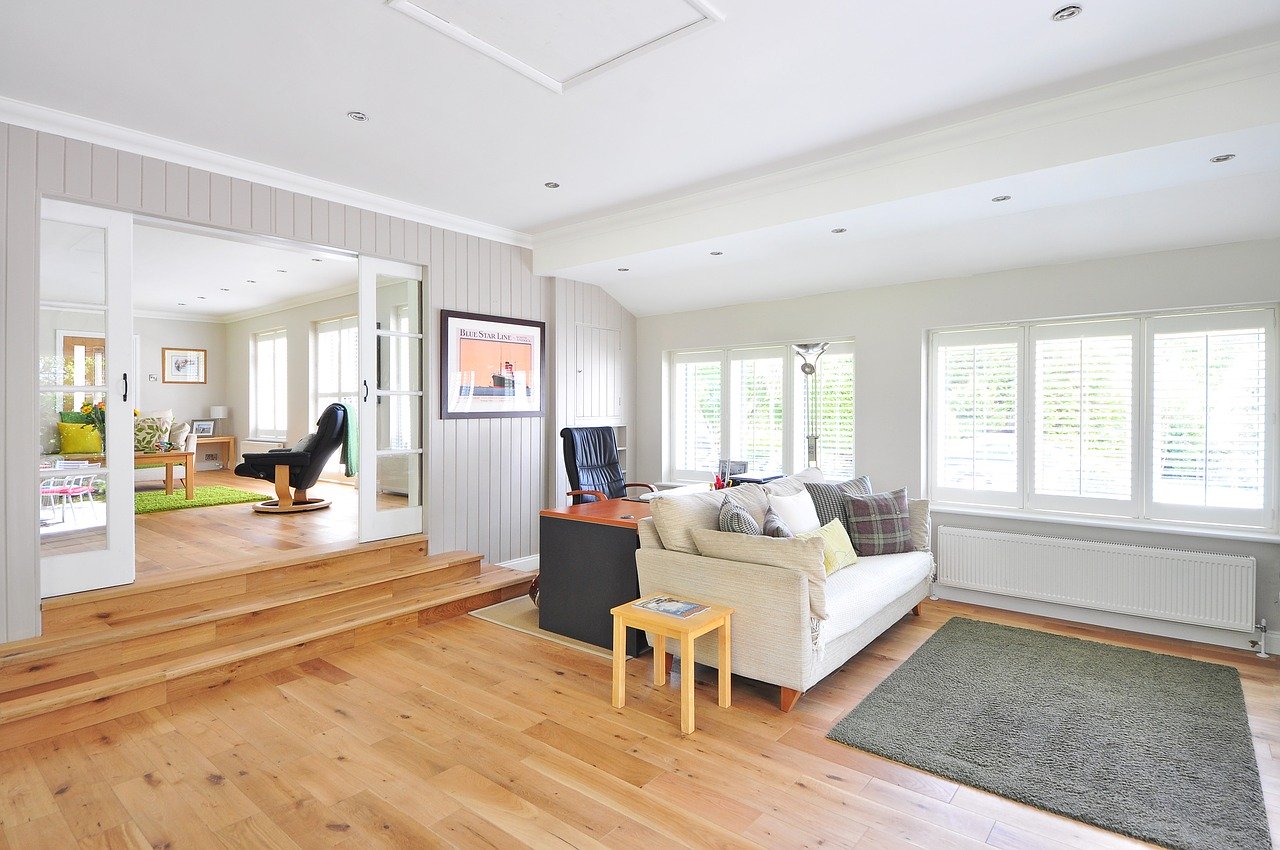Replacing the flooring in your home is a big deal. You can make all kinds of renovations and upgrades to your living space, yet if the flooring is in bad shape you won’t reap the reward you hope for. A new floor can change everything!
Here are some suggestions when it comes to replacing the flooring in your home:
Hardwood
Solid wood is a popular flooring choice and is as simple as it gets, being comprised of wooden planks or boards nailed to a wooden subfloor. It can be made of oak, maple, or other domestic woods, or from more exotic types, such as Brazilian cherry. Although it is considered a renewable resource, it isn’t always harvested in sustainable ways. If that concerns you, shop for flooring that is certified sustainable or reclaimed wood flooring harvested from demolished buildings.
People love solid wood flooring, as it looks great in any style of home with any decor, and it’s also very long-lasting. It can be refinished up to five times to remove surface scratches. It can also add value to your home, as well. These types of floors are easy to clean by regular sweeping and mopping. The biggest downside of hardwood floors is that they don’t stand up well to rough handling, and can warp if they are exposed to moisture for a long time. This makes them a poor choice for bathrooms or laundry rooms. They can shrink and swell due to changes in temperature, and they’re vulnerable to scratches and dents. Therefore, they need to be refinished as often as once every 10 years to maintain their beauty.
Engineered Wood
This type looks just like solid wood, but it’s made in a different way. It has a thin veneer of natural wood on top that shows the grain, with layers of less expensive plywood underneath. This makes engineered wood both cheaper and sturdier. Some types of engineered wood have even more stability with backing made from recycled wood fiber mixed with stone dust.
Engineered wood floors can give you the look of solid wood at a marginally lower price, and that will make it easier to afford exotic woods such as tigerwood or Brazilian maple, which are more resistant to scratches and dents. These are also more stable than solid wood and less sensitive to changes in temperature and humidity, so they will be a reasonable choice for a basement room, unlike solid woods. Engineered wood can also scratch and dent easily. It’s less durable than hardwood over time because it can only be refinished one to three times; after that, you risk wearing through the veneer to the plywood underneath.
Bamboo
This is a fast-growing plant that is used to produce flooring with the look and feel of hardwood. It’s become popular recently as an eco-friendly alternative to wood flooring. Just like hardwood, bamboo flooring is available in both solid strips and engineered planks and comes in several different patterns that show the grain of the grass. Flat-grain bamboo flooring has darker stripes across the boards showing the nodes in the bamboo, while vertical-grain bamboo flooring has long, narrow strips packed tightly together. End-grain bamboo has lots of little short strips.
Bamboo flooring is described as tough and durable. Like engineered wood, it is available in forms that are easy to install. Bamboo flooring also varies in durability. The cheaper varieties are vulnerable to scratches and dents, just like wood flooring. Bamboo flooring works in all the same places as wood and is suitable for living areas, hallways, and bedrooms. However, it may not be sturdy enough to use in a kitchen or mudroom.
There are so many options available to choose from as you consider a home renovation. When it comes to replacing the flooring in your home, Ascension General Contractors is here to help get your project completed.

